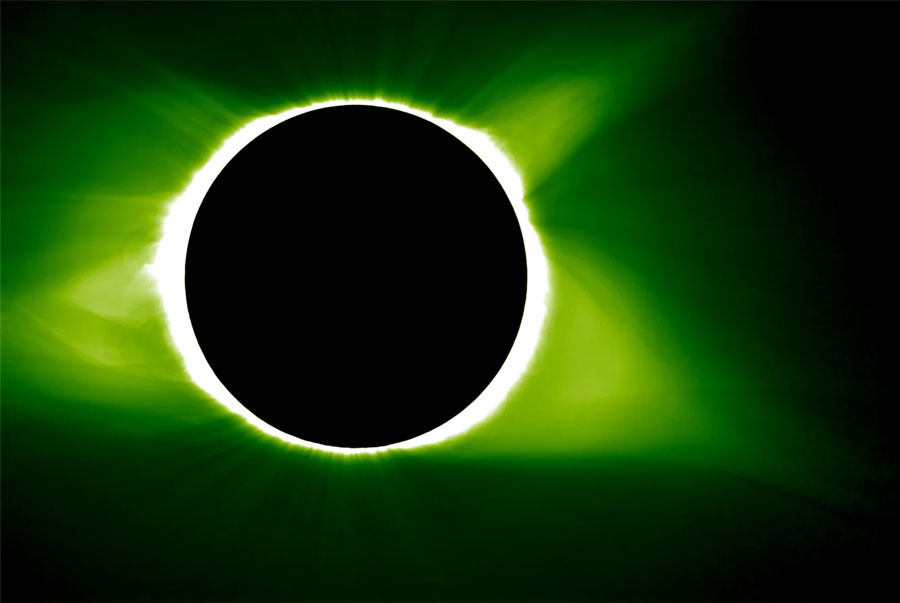Hi readers!
Scientific American reported on January 3rd, 2024: The Science of 2024’s Epic Solar Eclipse, that will be the last for a Generation. Please read the full article on the following link.
On April 8th, 2024, moon will pass in front of the stars, projecting a strong shadow of the sun across the entire continent starting from Mazatlán (located on the Pacific coast across from the southernmost tip of the Baja California Peninsula) Mexico, to the very easterly edge of St. John’s Newfoundland and Labrador, Canada: Please see figure 1 below). The moon’s shadow will take about two and a half hours to cover that ground, turning day into night for up to four minutes. Millions will watch the event: the last total solar eclipse to occur in North America until 2044.

Figure 1. Path of the solar eclipse of April 8th, 2024
Scientists are preparing to catch a glimpse of some of the sun’s closest-held secrets and to study some of its subtle effects on Earth. To avoid the cloud cover expected in the rainy season of April 2024, hundreds of instrument laden balloon will be used for monitoring the weather, capturing clear images of the cosmos, carrying out scientific experiments and testing out new radar technology. The balloons will be rising as high as 35 kilometers in the air as the eclipse develops its impact on Earth’s atmosphere and weather.
In the shadow of the moon, the air temperatures is expected to suddenly drop by more than five degrees Celsius that can send gravity waves rolling through underlying cloud layers.
“Gravity waves (pressure waves generated by accelerated motions of gravitating masses and propagate as waves that moves away from their source at the speed of light), atmospheric holes, and dazzling coronal displays will accompany total solar eclipse across the U.S., Mexico, and Canada (Figure 1).
“Gravity waves helps mixing in the atmosphere and the transport of energy hence, understanding its role in climate change is important”.
Most calendar years have two solar eclipses. The maximum number of solar eclipses that can take place in the same year is five, but this is very rare as in the past 5000 years, 5 solar eclipse took place in only 25 years as per NASA calculation The last time this happened was in 1936, and the next time will be in 2206.
On the ground, chief scientist (Trae Winter), at the Advanced Research in Inclusion & STEAM Accessibility (ARISA) Lab in Massachusetts will listen for the changing noises of animals in and around the moon’s sweeping shadow. Winter is especially keen to hear crickets (small sized insects with cylindrical and/or vertically flattened bodies) which are expected to become more active as darkness briefly falls.
“A lot of cricket species search for their mate around twilight; hence winter is expecting cricket noises and sounds to increase.”
He will also look for shifts in human activities as well across the eclipse’s path which unlike most total solar eclipses, encompasses heavily populated areas rather than remote stretches of the ocean.
“It’s a unique opportunity for scientific experiments” Winter added”.

Picture 2. A view of the sun’s corona in green wavelength visible light obtained by Southwest Research Institute during airborne studies of total solar eclipse of August 21, 2017: Credit NASA/SwRI Amir Caspi/Dan Seaton.
As the sun is blocked by the moon, one of the most eye-catching features is the sudden visibility of the solar corona (pl. see picture 2 above ). This is the outermost region of the sun’s atmosphere extending from its surface out to millions of kilometers around the star En-route to which the corona can reach temperatures of millions of degrees compared with a temperature of just 5,500 degrees C on the sun’s surface, or photosphere.
Why temperature rises? is an unanswered question in astronomy as an astrophysicist at NASA’s Marshall Space Flight Center says,
“we don’t know what mechanisms are involved to transfer this energy”.
A solar eclipse gives a rare opportunity to observe the corona in an attractive yet delicate detail, with the moon shadowing the sun more deeply than anything humans can create. Nothing can work to suppress the irresistible light that comes from the deep layers of the solar surface,” says Alexandra Tritschler of the National Solar Observatory.
Amir Caspi of the Southwest Research Institute is planning to send infrared camera upward in the air on a NASA WB-57 aircraft. Through a telescope mounted in the nose of the aircraft, the infrared camera will take multiple pictures of the eclipse, producing stunning images of the corona dancing around the moon. He has already experimented with this in 2017 when the sun’s activity cycle was near its minimum. In April 2024, the solar cycle is approaching its maximum (I have already explained this in my blog of April 2023) hence the views could be even more spectacular. A more active sun raises the chances to see and closely study prominences and giant blobs of magnetized plasma that erupt into the corona from the sun’s surface.
“For every solar eclipse, the solar corona is different,”
says a solar astrophysicist at the University of Colorado Boulder which makes it fascinating.
Two spacecrafts: NASA’s Parker Solar Probe and Solar Dynamics Observatory as well as the Daniel K. Inouye Solar Telescope (DKIST) in Hawaii, will produce high-resolution images of the sun. Although DKIST will only see a partial eclipse from its location, but it will work in tandem with its space-based counterparts as the eclipse passes over North America, providing multiple viewing angles of the corona to supplement Caspi’s observations.
“Gaining that enhanced perspective will provide an incredible opportunity for the first time, to measure the coronal magnetic field,” says DKIST’s program scientist for operations. It will allow scientists to work out how the magnetic field connects to the outer and inner parts of the corona? besides helping in determining the frustrating physics of coronal heating and understanding how the sun’s magnetic field propagates through this mysterious region could lead to piercing forecasts for space-weather surge bound for Earth.
Another area of experimentation is Ham radio (Amateur radio that use radio frequency spectrum for purposes of non-commercial exchange of messages) in which radio signals will be boomed to monitor the solar-eclipse science. In addition to that, Eclipse’s effects on Earth’s upper atmosphere will also be monitored by sending beam of radio signals in the upper atmosphere. Wherever the moon’s shadow falls, it effectively cuts a hole in the ionosphere (the ionized region of the atmosphere, some 80 to 1,000 km above the planet’s surface).
“When the eclipse comes on, the shadow blocks x-ray and ultraviolet energy from the sun and when that gets blocked, ionization either slows or stops.”
A total solar eclipse’s disruption of the ionosphere can change communication conditions. The eclipse creates a weaker ionosphere that bends radio signals less, but the disruption can be measured and when on April 8th, 2024, moon perfectly ruins out the sun to darken the land below and the eclipse peaks, there will be a few moments of total radio silence.
Don’t worry dear readers! all this fantasy will be watched in Mexico, USA and Canada and not in Pakistan. Even if it does, we will not appreciate it because we don’t understand the phenomenon. I am explaining it to send some awareness of how those who are rising in the world use each and every moment of the opportunity to learn mother nature which is our obligation, but we don’t understand and act upon it.
That’s how we are.
See you next week, take care, Bye.





